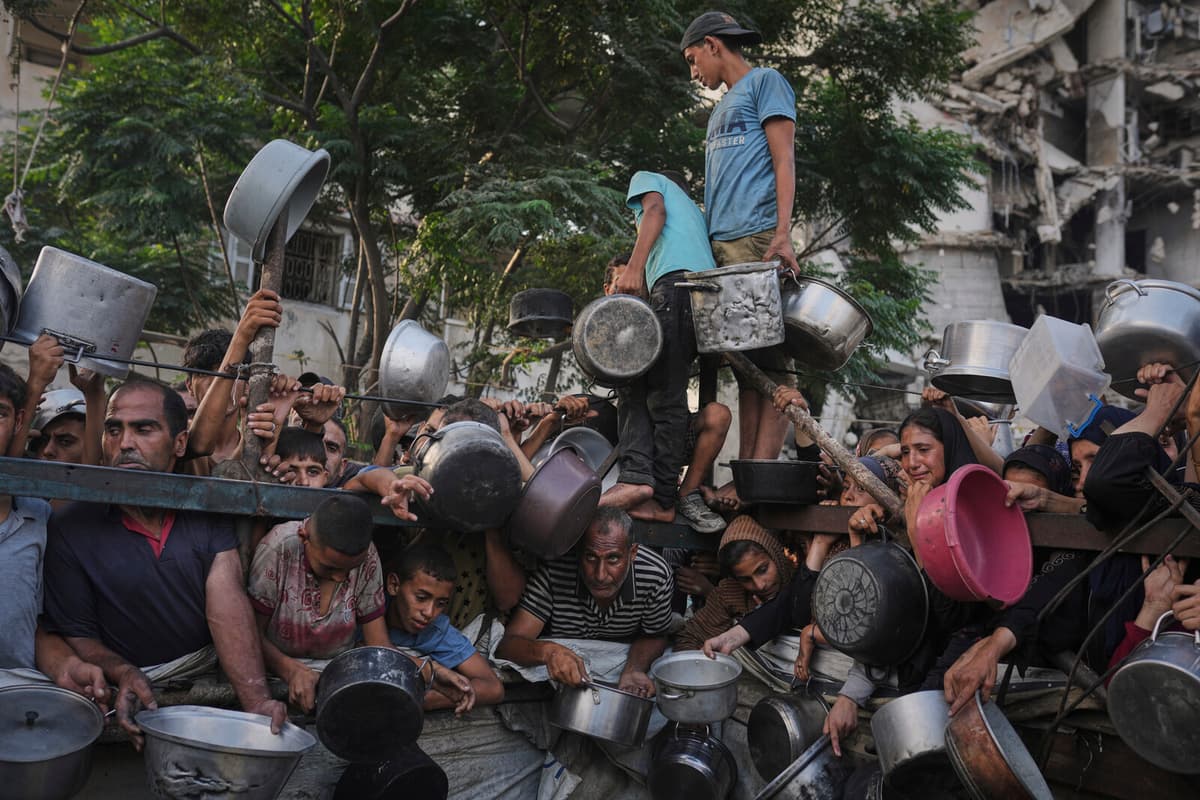A meal of food a day, at most. Often macaroni. This is what life looks like for 26-year-old Mohammed Khader and many with him in Gaza.
Previously, there were some beans to get, but now it has become too expensive, he says when TT reaches him.
He tells that all food has become expensive, for example, a kilo of wheat flour on the market costs around 30 dollars, just under 290 Swedish kronor. And the lack of food is not the only problem. He also says that it is difficult - and expensive - to withdraw money and that cash that is wrinkled or slightly damaged is not accepted but instead becomes worthless.
WHO stays
The humanitarian situation in Gaza is about to collapse, according to the UN.
In recent days, at least 90 people have been killed in connection with the distribution of emergency aid and during the night to Tuesday, Israel's military attacked the World Health Organization's (WHO) main warehouse and staff housing.
"As the UN's leading health organization, WHO's operational presence in Gaza is now at risk, which paralyzes efforts to maintain a collapsing health system," WHO writes in a comment to TT, but emphasizes that they will continue their work on site.
"WHO will stay in Dayr al-Balah and perform and expand its operations," the organization writes.
Just in the last 72 hours, 21 children have died due to malnutrition and starvation, according to the director of Shifa Hospital, Mohamed Abu Selmiey.
Mohammed Khader, who is currently in northern Gaza after having fled six times since the war broke out, says that the emergency aid has not reached him.
I have not seen any food distribution in two months, he says.
"Death phase"
An employee of the UN's aid organization for Palestinian refugees, Unrwa, calls what is happening in Gaza now the "death phase".
Besides the bombs falling over the wounded strip of land, children are withering away from malnutrition and dehydration, according to the Unrwa employee.
Mohammed Khader's testimony is similar. He tells that he sees people collapsing from hunger. And he is afraid that starvation will come soon.
There is no food, no clean water, no medicine, says Mohammed Khader in Gaza.
No hope, no life, no future. There is nothing here, he says.
Malin Carlsson/TT
Facts: Gaza war
TT
More than 59,000 Palestinians in the Gaza Strip have been killed since the start of the war, which followed the terrorist-stamped Hamas attack on Israel on October 7, 2023. The figures come from health authorities in Hamas-controlled Gaza.
A large proportion of the dead are women and children. Last year, Unicef estimated that one million children in the area are in need of psychological and psychosocial support.
Before the war, Gaza's population consisted of 2.1 million people. Around 90 percent of them have been displaced within the area's borders, according to the UN.
Israel's intense bombardment has led to a large part of the area's hospitals and schools being destroyed completely or partially. The spring's Israeli blockade has also led to famine in Gaza.
During Hamas' large-scale attack on October 7, 2023, over 1,100 people were killed in Israel, the majority unarmed civilians. In addition, nearly 250 people, including children, were taken hostage.
Sources: Ocha, Unicef, and news agencies.





